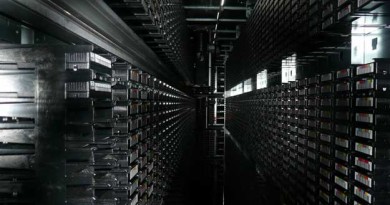Instant Asset Tracking for Enhanced Security Heightens RFID Usage in Data Centers
The growing requirement for faster and more accurate tracking and tracing of IT assets in data centers is prompting data center operators and hosting service providers to increasingly adopt radio-frequency identification (RFID) technology. This technology can rapidly locate, identify, and track assets without needing a clear line of sight, thereby reducing manual labor and errors.
New analysis from Frost & Sullivan Analysis of RFID in the Data Center Market, finds that the market earned revenues of $96.3 million in 2011 and estimates this to reach $952.6 million in 2017, with the widespread implementation of RFID technology in data centers globally.
RFID tags can quickly locate and track innumerable servers and vast numbers of data tapes in large data centers, thus lowering their replacement expenses.
“The lack of asset visibility sometimes results in duplication of existing assets, ultimately adding to total costs,” said Frost & Sullivan Senior Research Analyst Nandini Bhattacharya. “RFID can save costs by not only eliminating duplication, but also by preventing theft and loss through real-time tracking.”
RFID’s efficiency has attracted buyers from the financial sector, government agencies, and IT companies. To further boost adoption, industry associations and governments across all nations need to collaborate to institute a common standard. Government and industry regulations already mandate the maintenance of data and IT assets a key factor aiding the uptake of RFID in data centers.
“U.S. financial sector companies must comply with the Sarbanes-Oxley Act of 2002, for example, which regulates data storage and management,” said Bhattacharya. “The payment card industry has also set security standards for customer information, while other sectors have established regulations for IT asset audits and data confidentiality.”
Apart from favorable regulations and mandates, the technological advancements and availability of cost-effective solutions offering faster return on investment have attracted more end-users to the market. Pricing is a crucial purchase factor in this market and even though the costs of the technology have dropped in the last couple of years, it is still prohibitive to organizations with budgetary constraints.
Moreover, as RFID in data centers is still an emerging application, most potential end-users are still not aware of the technology. To gain more visibility, RFID developers need to create robust and innovative software platforms that can support the convergence of various technologies.
“Participants will find a huge market in Asia-Pacific because of the likely consolidation of the hosting service providers and outsourcing of services to the region,” noted Bhattacharya. “Among all regions, the Asia-Pacific is expected to grow at the highest compound annual growth rate of 72.7 percent from 2010 to 2017, followed by the Europe, Middle East and Africa at 46.3 percent, and the Americas at 35.1 percent.”
Strategic Analysis of the Global RFID Middleware Market, World Radio Frequency Identification (RFID) Health Care Market, RFID in Apparel Supply Chains, Analysis of the Active RFID and Sensor Networks Market, and Analysis of the RFID Market in the Oil and Gas Industry. All research services included in subscriptions provide detailed market opportunities and industry trends that have been evaluated following extensive interviews with market participants.
Data Center Talk updates its resources everyday. Visit us to know of the latest technology and standards from the data center world.
Please leave your views and comments on DCT Forum

